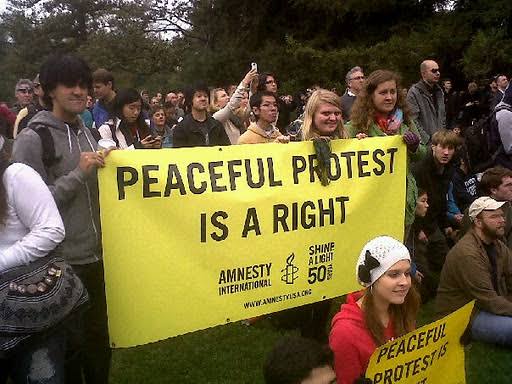Protests play a large role in any democratic society, even in dictatorships, protests have often been utilized to try and coerce the dictator into doing something for the welfare of its subjects. Protests have been at the helm of almost every major social change that has come about in the past few decades.
Protesting is the act of demonstrating one’s belief in a certain idea, ideology, person or object. When an individual has faith in a certain belief, s/he stands up against those who have the power to bring that idea to fruition but refuse to do so in the hopes of coercing said person with power to bring the idea to life.
Why People Protest
Protest generally crop up when a large group of individuals feel powerless to bring about a change in their own lives because of those in power. A protest is almost always the masses standing up to power.
People protest in hopes of bringing about a positive change in society, it’s an attempt to display the common will of the masses to those in power in hopes of changing their mind so as to benefit the masses.
Protests give people a sense of belonging and identity, Every human wishes to have a sense of purpose and rallying behind a specific cause allows them to have this.
Successful Peaceful Protests

One of the most well known peaceful protests actually happened right here at home. If you remember the history we studied in school well, then you know what I’m talking about. It’s the Dandi March that was led by Gandhi Ji.
Making salt out of the water from the Arabian Sea was an integral part of India’s indigenous economy. When the British took over, they banned Indians from producing salt. The Dandi March lasted for months as Gandhiji along with thousands of people marched to Dandi in Gujarat to peacefully demonstrate against the British by not only marching but also producing salt.
Sure, it took 17 more years for Indians to regain their rights to produce salt, they still got there by following Gandhi Ji’s Ahimsa (non-violence) and Satyagraha (Peaceful Protests by upholding the truth).
Similarly some of the other protests around the world that are well known and successful are; the suffragette protests Britain for women to obtain voting rights and the civil rights sit-ins in the US to provide rights and freedoms to the African-Americans and end segrigation.
So How & Why Do Peaceful Protests Turn Violent?
As far as I can tell there are only two reasons why peaceful protests turn violent. But before we delve into that we have to look at the atmosphere and environment of most large scale protests in today’s day and age.
More often than not, when a large peaceful protest gathers, the governmental machinery of that area is afraid of the peaceful protests turning violent and thus they tend to deploy crowd management personnel, police and any other local forced that they can gather.
On the protester’s end, they tend to be super-charged with emotion and adrenaline. Due to which, if they feel like they aren’t being heard, or if they begin to fear the crowd management personnel and police they can take immature, peremptory violent actions to ensure their safety.
Sometimes there are also some bad fish in the pond who incite violence on purpose, so as to serve their own selfish interests be it political power or even money.
More often than not, what happens is that the crowd management personnel are afraid of the protesters and the protesters are afraid of them. This fear is what makes people do things that they would have thought better not to do.
Protests work. Peaceful ones more than violent ones. But sometimes it is just too difficult to stop protests from turning violent. Sometimes, the aggression towards the power is so high in the masses that the only way they feel satisfied is if they feel they’ve brought down those in power.
You may also like:
Student Suicides – The Rampant Issue That We Are Not Talking About Even In 2019!